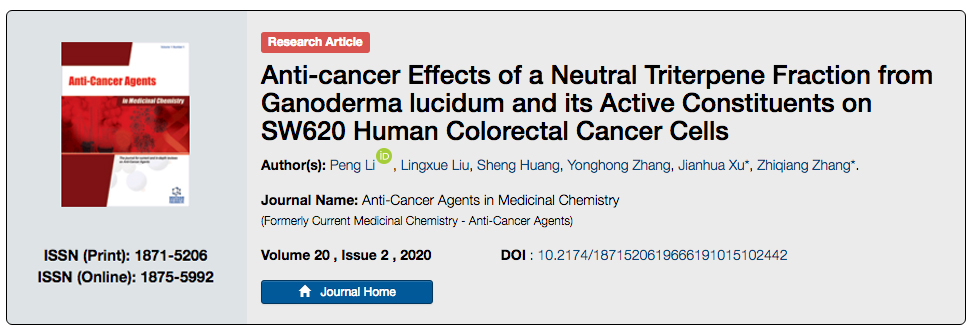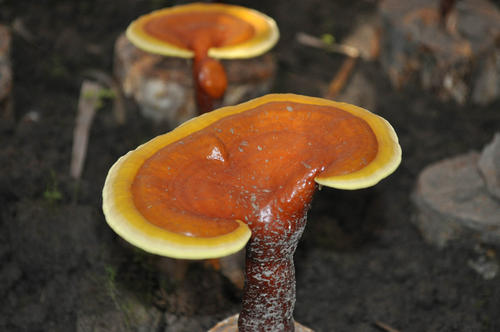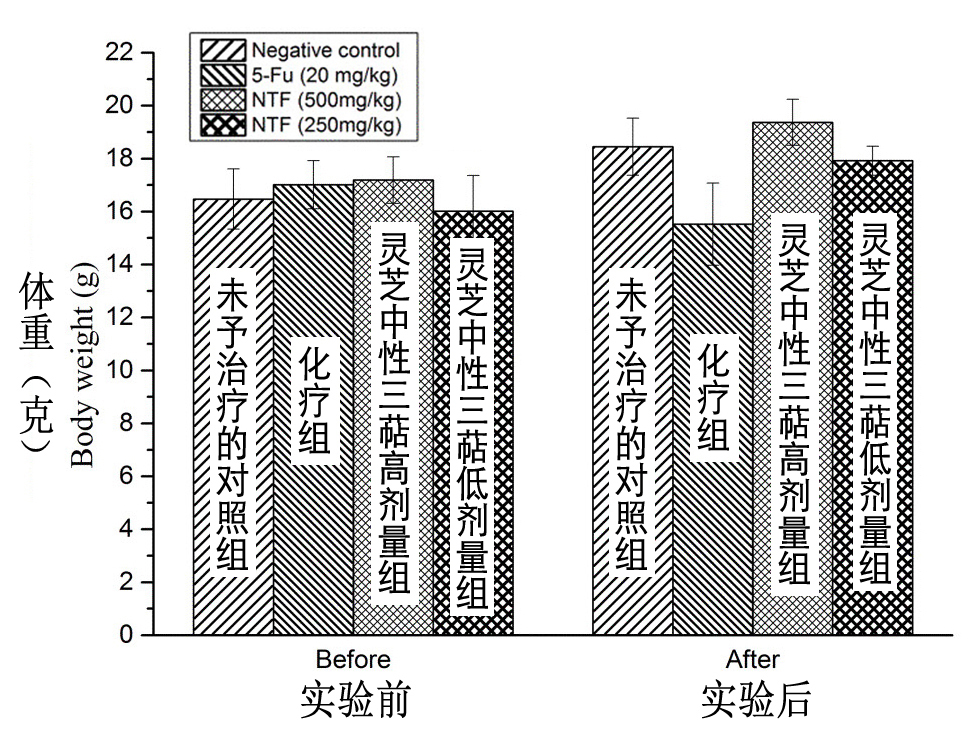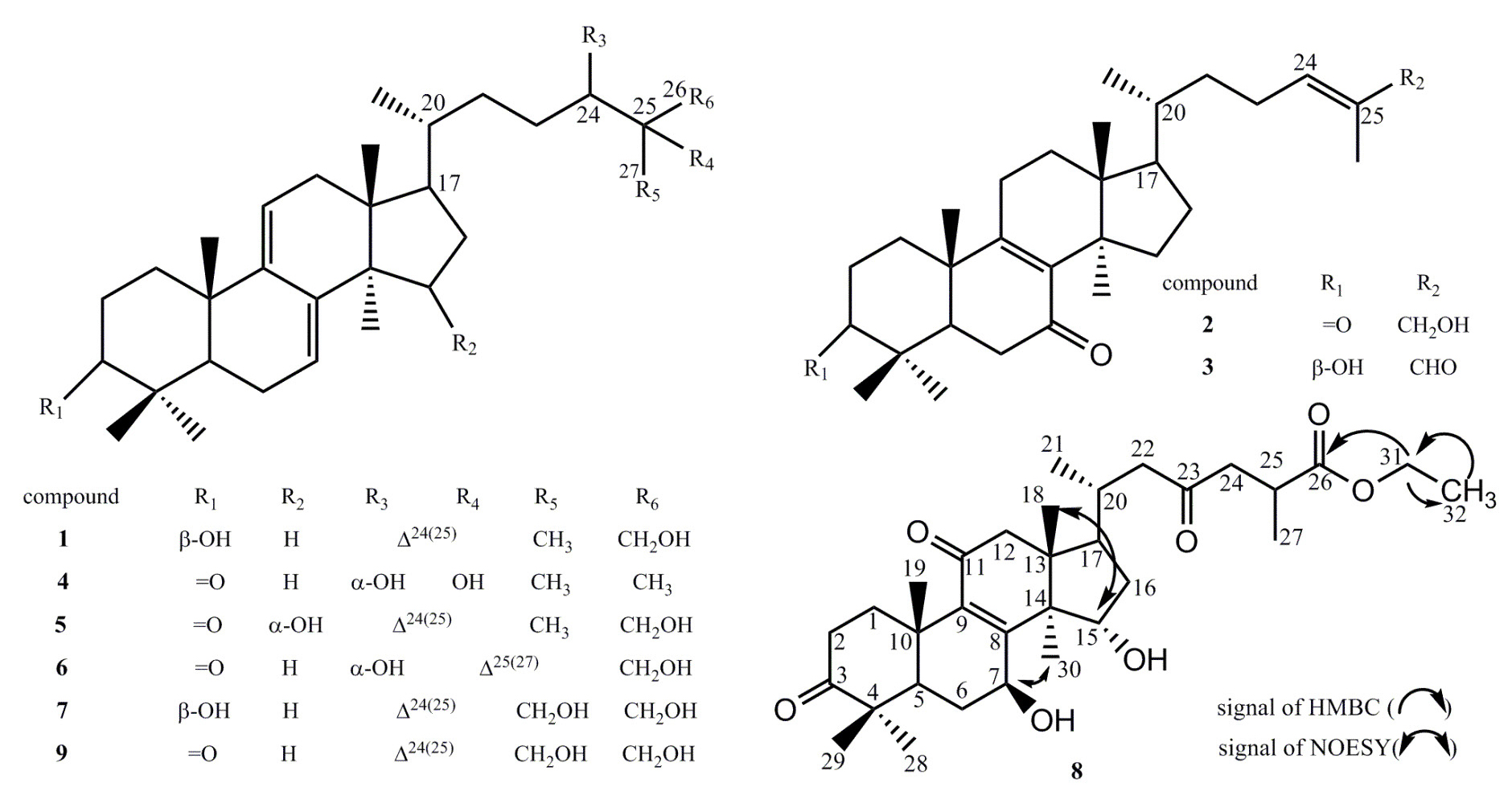Ganoderma lucidum neutral triterpenoids can inhibit the growth of colorectal cancer
Anti cancer agents in medical officially published in February this year (2020) Chemistry (anticancer agent in Pharmaceutical Chemistry) published a research result published by Professor Li Peng, School of medicine, Fujian Medical University. Through cell and animal experiments, this study confirmed that the neutral triterpenoids in Ganoderma lucidum can significantly inhibit the growth of colorectal cancer, and its mechanism is related to “promoting cancer cell apoptosis”.

Ganoderma lucidum neutral triterpenoids can inhibit the growth of colorectal cancer
Total triterpenoids = neutral triterpenoids + acid triterpenoids
Since scientists first discovered the triterpenoids of Ganoderma lucidum in 1982, it not only provides a scientific explanation for “why the fruiting body of Ganoderma lucidum is so bitter”, but also provides a clue for scientists to study “why Ganoderma lucidum can resist tumors”.
“Ganoderma triterpenoids” is a collective term, which generally refers to the active components with terpenoid structure in Ganoderma lucidum. According to their different chemical structures, they can be divided into two groups: one group is “acid triterpenoids” including ganoderic acids, the other group is “acid triterpenoids” including ganodermal alcohol “Neutral triterpenes” including alcohols), when the two groups of triterpenes are combined, it is called “total triterpenes”.

Compared with the antitumor effect of total triterpenoids and acid triterpenoids of Ganoderma lucidum, there are many scientific evidences, and the research on neutral triterpenoids of Ganoderma lucidum is relatively few, so Professor Li Peng’s team focuses on this part.
They used the fruiting body of Ganoderma lucidum as the experimental material, first extracted the total triterpenoids of Ganoderma Lucidum with ethanol, then further separated the neutral triterpenoids and acid triterpenoids, to explore their inhibition on colorectal cancer.
Cell experiment: the antitumor effect of neutral triterpenes is higher than acid triterpenes
The researchers cultured the ganoderma neutral triterpenoids and acid triterpenoids together with three human colorectal cancer cells with different characteristics for 48 hours and found that on the whole, the inhibition of Ganoderma neutral triterpenoids on the growth (proliferation) of cancer cells was significantly better than that of Ganoderma acid triterpenoids.

The anticancer effects of neutral triterpenes and acid triterpenes of ganoderma lucidum were compared
Animal experiment: Ganoderma lucidum neutral triterpenoids effectively inhibit tumor growth
The human colorectal cancer cell line SW620 with “lymphatic metastasis ability” was implanted into the subcutaneous of nude mice (immunodeficient mice). After tumor growth, the ganoderma neutral triterpenoids of 250 mg / kg or 500 mg / kg were given orally every day.
After 13 days of experiment, it was found that the intervention of Ganoderma lucidum neutral triterpenoids could make the tumor grow slowly and small, and its inhibition effect was comparable to that of chemotherapy drug 5-FU (20 mg / kg intraperitoneal injection per day), but it did not make the weight loss as serious as 5-FU

Tumor tissue taken from colorectal cancer nude mice at the end of the experiment

Tumor growth changes of colorectal cancer in nude mice during the experiment

Average tumor weight of colorectal cancer nude mice in each group at the end of the experiment

Body weight of colorectal cancer nude mice in each group before and after the experiment
Functional ingredients: at least nine triterpenoids
As mentioned at the beginning of this article, Ganoderma neutral triterpenoids are also a mixture, which contains a variety of triterpenoids. According to the analysis of the researchers, the above-mentioned Ganoderma neutral triterpenoids, which can inhibit colorectal cancer, contain at least nine triterpenoids.

Nine main triterpenoids in neutral triterpenoids of Ganoderma lucidum
Anti cancer mechanism: promoting cancer cell apoptosis
These nine triterpenes were cultured in vitro with human colorectal cancer cell line SW620 respectively, and it was found that they have more or less the ability to kill cancer cells.
Using ganodermanondiol as the most representative one, the researchers found that ganodermanondiol can activate the apoptosis mechanism of cancer cells and push cancer cells from the living altar to the death abyss. Its effective concentration (inhibiting half of cancer cells) is 11.17 μ g / ml.
This concentration has no killing effect on normal cells (NIH3T3), and it must be increased to more than 80 μ g / ml in order to have a significant effect (inhibit the survival of half of mouse embryonic cell lines).
This shows that Ganoderma lucidum ketone diol and general chemotherapy can distinguish cancer cells and normal cells, and give different “treatment”, which is quite different from the effect of good or bad chemotherapy drugs on “killing” cells.
Whether the mechanism of Ganoderma lucidum neutral triterpenoids initiating apoptosis of cancer cells is realized by regulating mitochondria in cancer cells, the researchers think it is worth further exploring.
Feference: i P, et al. Anti-Cancer Effects of a Neutral Triterpene Fraction from Ganodermalucidum and its Active Constituents on SW620 Human Colorectal Cancer Cells. Anticancer Agents Med Chem. 2020; 20(2): 237-244. doi: 10.2174/1871520619666191015102442.







